Spain could lose 4.4% of GDP if climate change policies are not more forceful
Environmental policies to achieve the Paris Agreement are already supported from an economic point of view. The Spanish think tank OIKOS has published a pioneering study that reveals the possible consequences for Spain if current global decarbonisation policies are maintained until 2050.
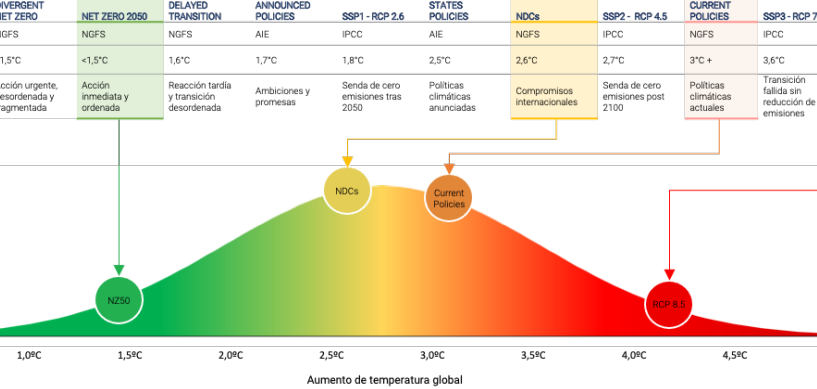
The study is based on analysis by a number of organisations, including the Network for Greening the Financial System (NGFS), the working group of leading banks and climate scientists. These organisations set out several scenarios, ranging from current decarbonisation policies to a disorderly and fragmented transition to immediate and orderly action to meet the objectives of the Paris Agreement.
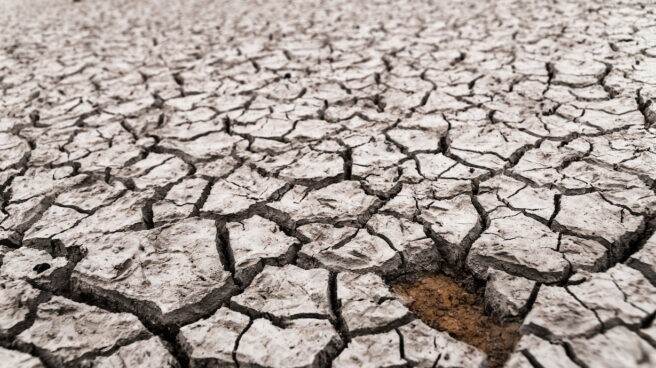
Spain is particularly vulnerable
Spain, due to its geographical and economic conditions, is particularly vulnerable to both climate inaction and disorderly decarbonisation. The impacts on inflation, unemployment and productivity could be substantial in the not so distant future. In addition, temperature rise projections reveal that some regions will face increasing drought problems. While Spain alone cannot curb climate change, it is in Spain's strategic interest to contribute to the global effort through the EU framework for action and, on the other hand, to adapt the economy and infrastructure to the most plausible scenarios of climate deterioration.
Economic impact in Spain
If current global decarbonisation policies are maintained, Spain could experience a 4.4% drop in GDP by 2050 (Fig. 1), falling to 3.3% in a scenario of disorderly decarbonization (Fig. 2) and 1.5% in the case of an orderly transition (Fig. 3). According to the study's projections, the decline in GDP could increase to 7% in the case of no action on climate change.
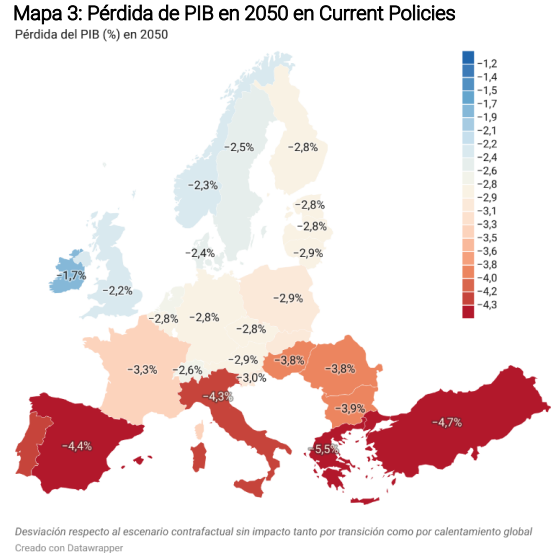
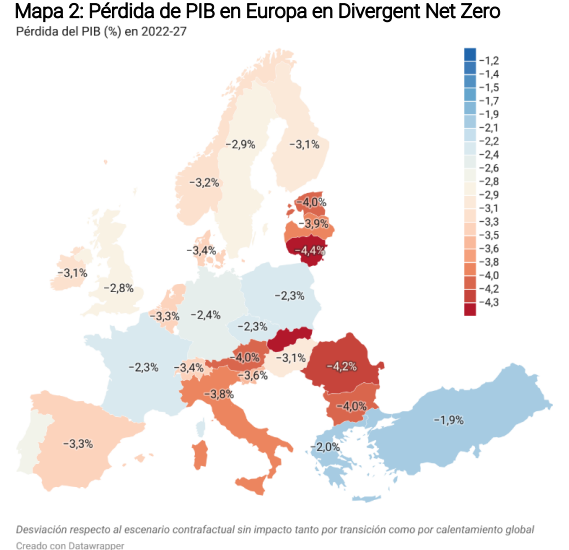
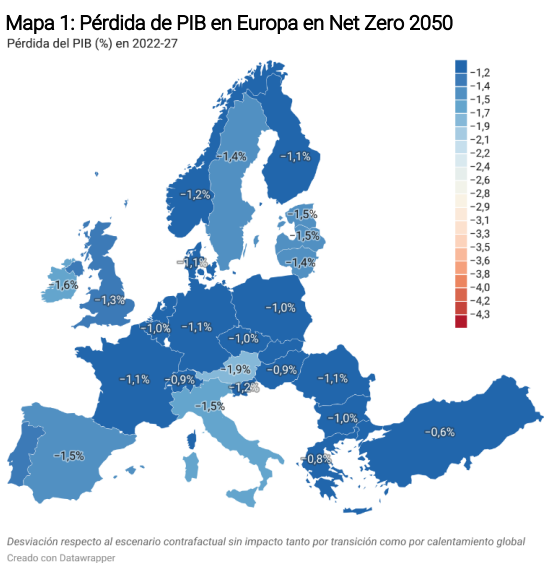
The report also indicates that inflation could worsen by more than 3% over the next two decades if appropriate measures are not implemented.
Climate impact in Spain
In climate terms, the impacts would accelerate from 2030 onwards and, if current global decarbonisation policies are maintained, the average temperature would increase by 3 degrees Celsius in most Spanish regions by the year 2100 and would be accompanied by a reduction in rainfall of up to 19% in regions such as Andalucía.
Some of the study main conclusions
- Curbing climate change can only be effective as a global collective endeavour and that it makes no sense to undertake it unilaterally and alone. At the same time, it shows that such a global fight rewards each country economically in the long run and, while it advises against rushing into it, warns that the window of opportunity to act with an orderly transition is closing at a worrying pace.
Developed countries such as Spain (Figure 4) have already managed to decouple economic growth and emissions growth, although there is still some way to go.
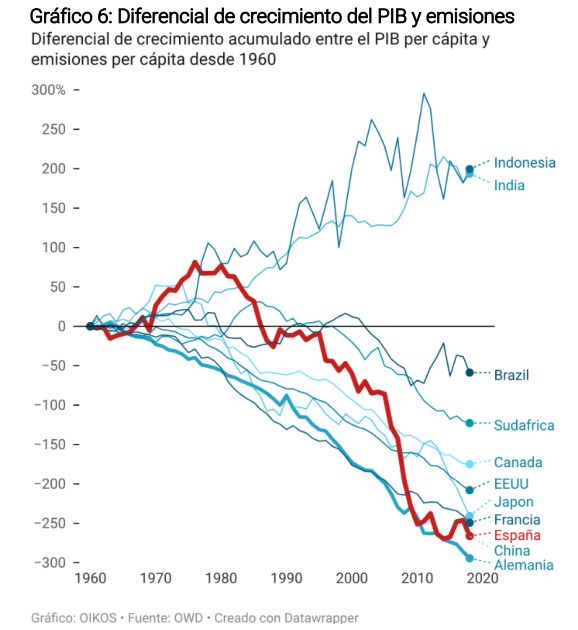
2. The more ambitious effort to combat climate change more than compensates economically for the omission of such action in the long term. This reward will not be immediate.
3. Not every action against climate change is the most desirable and without any harm. A disorderly and abrupt energy transition would generate counterproductive and avoidable economic impacts. In the case of Spain, the economic cost could be a recession and an increase in unemployment and inflation.
4. Spain is economically more vulnerable than most European countries, both to the impacts of climate change and to the effects of disorderly or delayed transitions. It is in Spain's interest more than most EU countries to push for an orderly and immediate energy transition and to accelerate climate adaptation efforts in view of the projections.
5. Climate change impacts will have multiple ramifications and second-order impacts, which could include supply chain disruptions, inflationary spirals or migration crises with a potential impact of political destabilisation in both the EU and other regions of the world (Fig. 5).
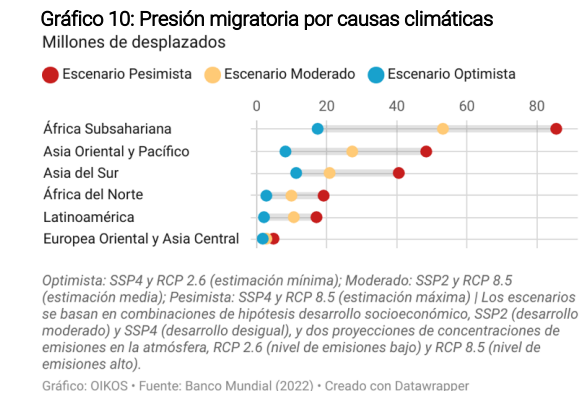
The full report in Spanish: OIKOS - Política y Medio Ambiente